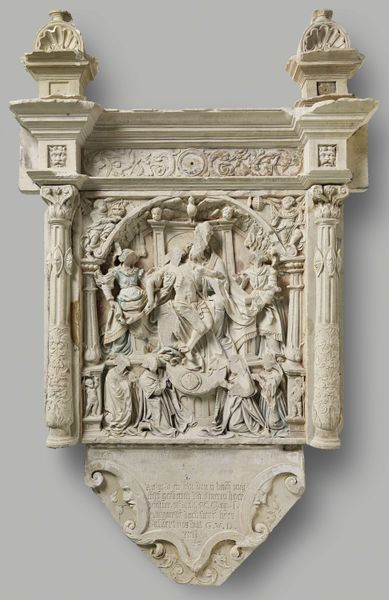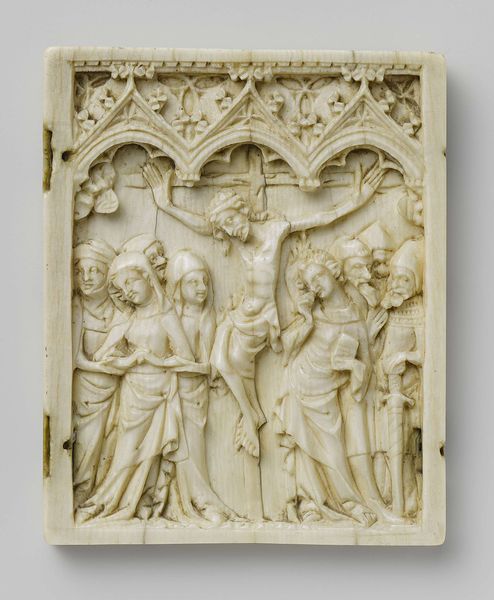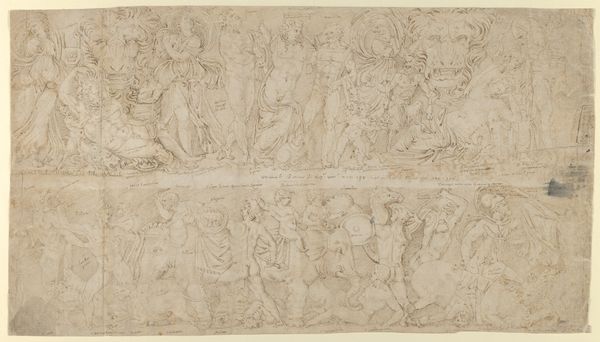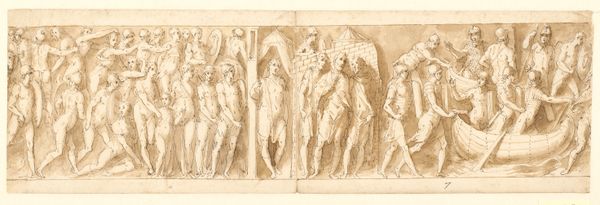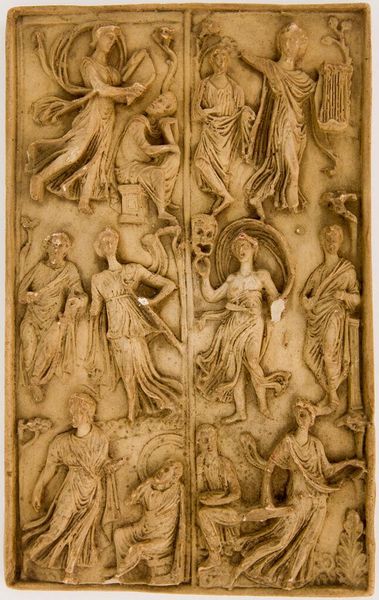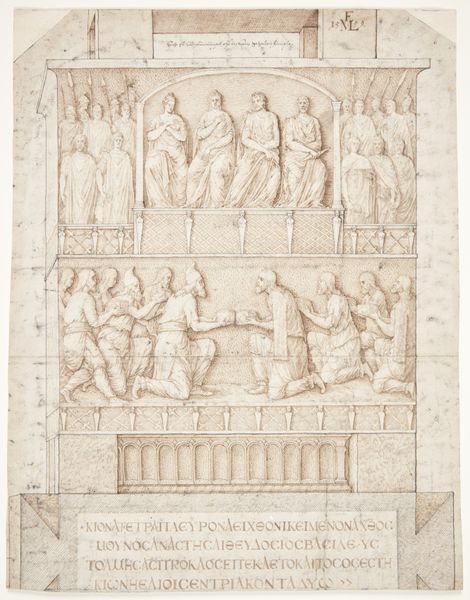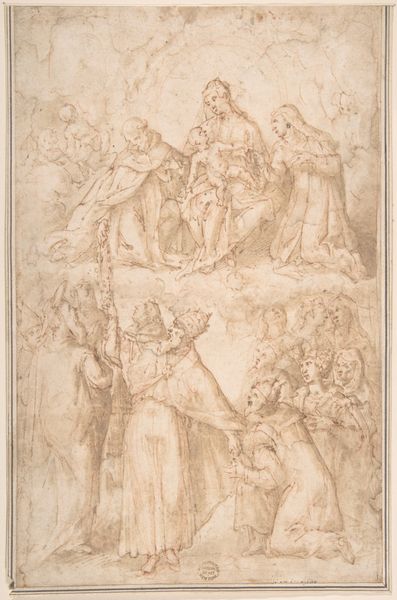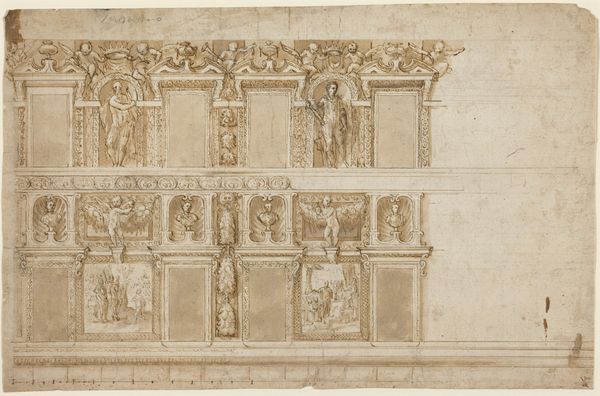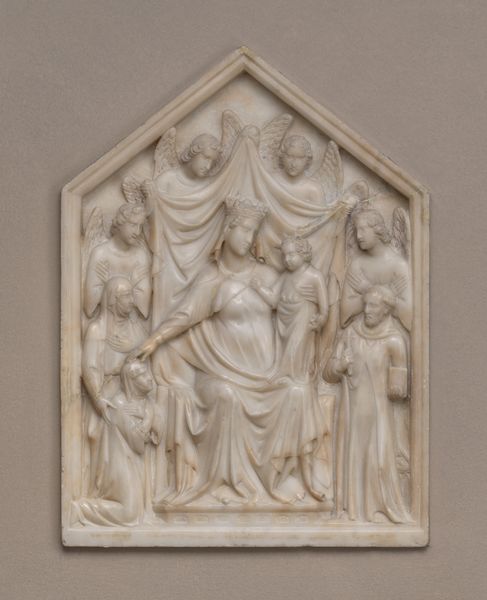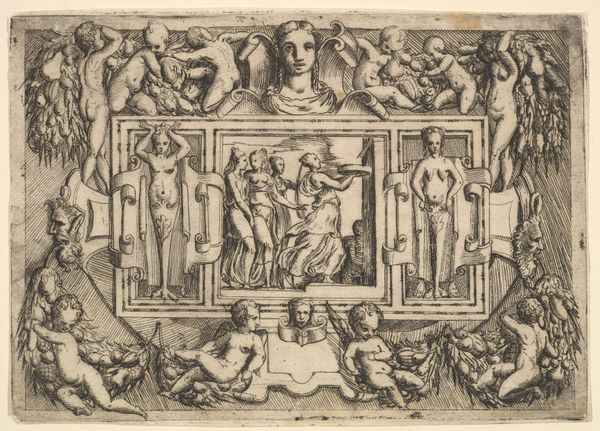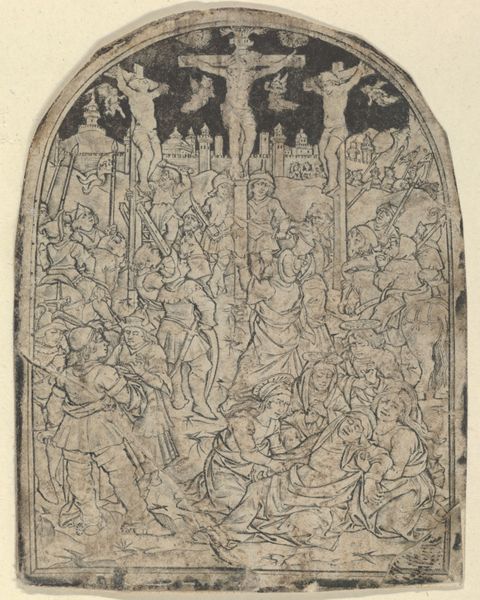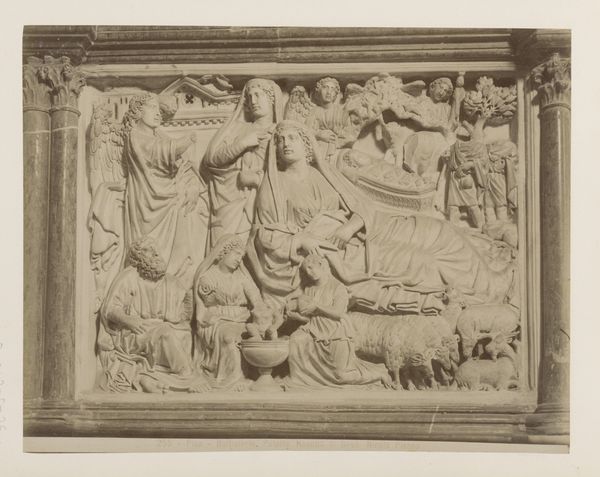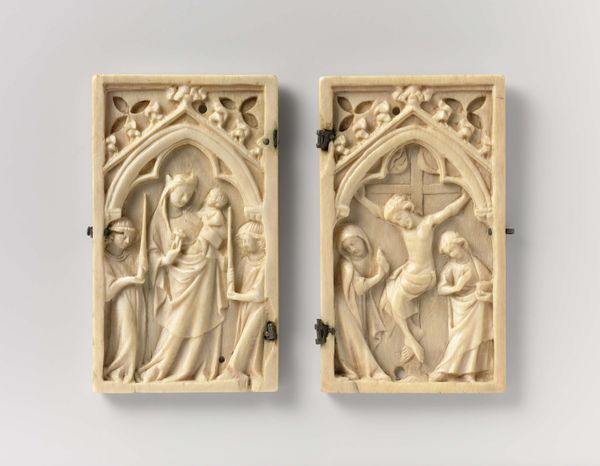
carving, relief, sculpture, ivory
#
carving
#
narrative-art
#
gothic
#
relief
#
figuration
#
sculpture
#
repetition of pattern
#
wooden texture
#
ivory
#
miniature
Dimensions: 8 3/16 x 8 3/4 in. (20.8 x 22.23 cm)
Copyright: Public Domain
Editor: This diptych, dating from around 1375, presents scenes from the life of Christ, meticulously carved in ivory. I am struck by its intricate detail within such a small scale. What does this piece tell us about its historical moment? Curator: This diptych gives us a fascinating insight into the intersection of religious belief, artistic patronage, and the social function of art in the late 14th century. Ivory diptychs like this were luxury objects, weren't they? Who do you think may have been the audience? Editor: Presumably, someone wealthy enough to afford ivory and such fine craftsmanship... a member of the clergy perhaps? Curator: Likely. These diptychs served as portable altarpieces for private devotion, affirming the owner's status and piety. How does its small size shape its impact on the viewer, especially in contrast to, say, monumental church art? Editor: The scale encourages intimacy, a private moment of reflection and connection with the divine, different from the communal experience in a cathedral. The repeated arches feel like small stages setting off the episodes in Christ’s life. Is the narrative function significant for the time? Curator: Absolutely! These narrative scenes are not merely illustrative; they reinforce doctrinal teachings and moral values within a culture deeply rooted in religious tradition. Its miniature format is designed to be easily portable and viewable in various private locations. This would amplify the owner's status and daily performance of faith. To that end, how does viewing art through that lens change how we engage with such religious iconography today? Editor: I see it. By understanding its original social function, the diptych transforms from just a beautiful object into a powerful artifact that offers a unique window into the world and beliefs of its time. Thanks for your help! Curator: My pleasure! This reflection enriches our understanding of both art history and social history through such powerful devotional art.
